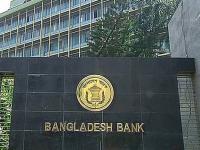
The year 2020 has been like no other in recent history. Even the biggest doomsdayers could not have predicted what was to occur, and how the Covid-19 pandemic was to derail millions, if not billions, of dreams and aspirations.
In terms of our greater national ambitions, the pandemic severely obstructed Bangladesh’s progress towards reducing poverty, among other things. According to various estimates, the fallout from the pandemic has created somewhere between 17.5 and 20 million new poor in the country. And according to a new UNDP study, the poverty rate in the urban areas of Bangladesh has increased three-fold during this time period, mainly due to a massive number of people in cities and towns losing their jobs or experiencing a reduction in their salaries.
A World Bank report titled “Losing Livelihoods: The labour market impacts of Covid-19 in Bangladesh” further confirmed this. The report said that around 68 percent of people who had to stop working due to the pandemic in urban areas of both Dhaka and Chattogram lost their jobs. It also estimated that the rate of jobs lost in Dhaka was 76 percent, while it was 59 percent in Chattogram. Loss of income was another factor mentioned in the study. In Dhaka and Chattogram, about 80 percent of wage-earners and 94 percent of business owners said their earnings were lower than usual, while median wages for salaried and daily workers decreased by roughly 37 percent. Predictably, daily and weekly waged workers experienced much greater losses in income compared to salaried workers.
According to ILO’s Assistant Director-General Chihoko Asada-Miyakawa, “Covid-19 has inflicted a hammer-blow on the region’s labour markets, one that few governments in the region stood ready to handle.” She added: “Low levels of social security coverage and limited institutional capacity in many countries have made it difficult to help enterprises and workers back on their feet, a situation compounded when large numbers remain in the informal economy.”
In Bangladesh, for example, out of the 61 million people who are employed, 52 million are in the informal sector, which contributes more than 40 percent to GDP. As most of these workers are involved in daily work, and rely on daily cash, they have very little provisions of employment protection. As such, according to the WB report mentioned earlier, cleaning workers or housemaids (who make up a significant portion of the informal economy) received the biggest blow as 54 percent of job losses were reported in these fields.
Despite these great difficulties, the Asian Development Bank (ADB)—and other international organisations—projected the Bangladesh economy to rebound strongly in 2021, with an expected GDP growth of 6.8 percent. However, much of this growth will be dependent on the performance of manufacturing and exports. This is where the uncertainty factor comes in.
According to the ADB, a prolonged second wave of Covid-19 in Bangladesh, or in any of its major export destinations for that matter, could threaten the recovery and growth projection. And as Europe is already struggling to cope with a second wave of Covid-19, chances of a quick recovery could very well prove to be beyond our reach. According to a Bangladesh Bank report that came out on December 22, opening letters of credit (LCs) for back-to-back import of textile products dropped during November, as apparel exporters decreased purchase of raw materials after postponing shipments by one to two months due to the second wave of coronavirus in Bangladesh’s key export destinations such as the US and Europe.
What does this mean? Well, for one, it means that the government may have to roll out a new round of stimulus package since recovery might be slower. Social safety net programmes also need to be expanded in order to cover the multitudes of new poor that have been created due to the pandemic.
According to Khondaker Golam Moazzem, research director at the Centre for Policy Dialogue, a social safety net programme like Vulnerable Group Feeding has covered only 33 percent of those eligible for the programme. The poverty caused by the pandemic would be alleviated to some extent if necessary assistance were distributed better. In order to do that, the government could use digital payment to properly distribute the funds for the poor and to avoid mis-targeting and corruption.
Due to the significant rise in urban poverty and rising number of slums inhabited by poor and extreme poor people, cities will also require more anti-poverty schemes specifically targeting the newly created—as well as the previously existing—urban poor. Since the government does not have unlimited funds at its disposal, it must utilise its resources more efficiently.
Covid-19 has destroyed many lives and livelihoods in 2020. As we welcome 2021, it may take a while for all of that to be rebuilt. During that time, the government will have to lend its full support to the people, especially those unfortunate enough to have been pushed back into poverty. The sooner these people are pulled out of the poverty trap, the quicker our overall economy can recover. That’s the hand we have been dealt and now have to work with.
Eresh Omar Jamal is a member of the editorial team at The Daily Star.
His Twitter handle is: @EreshOmarJamal









